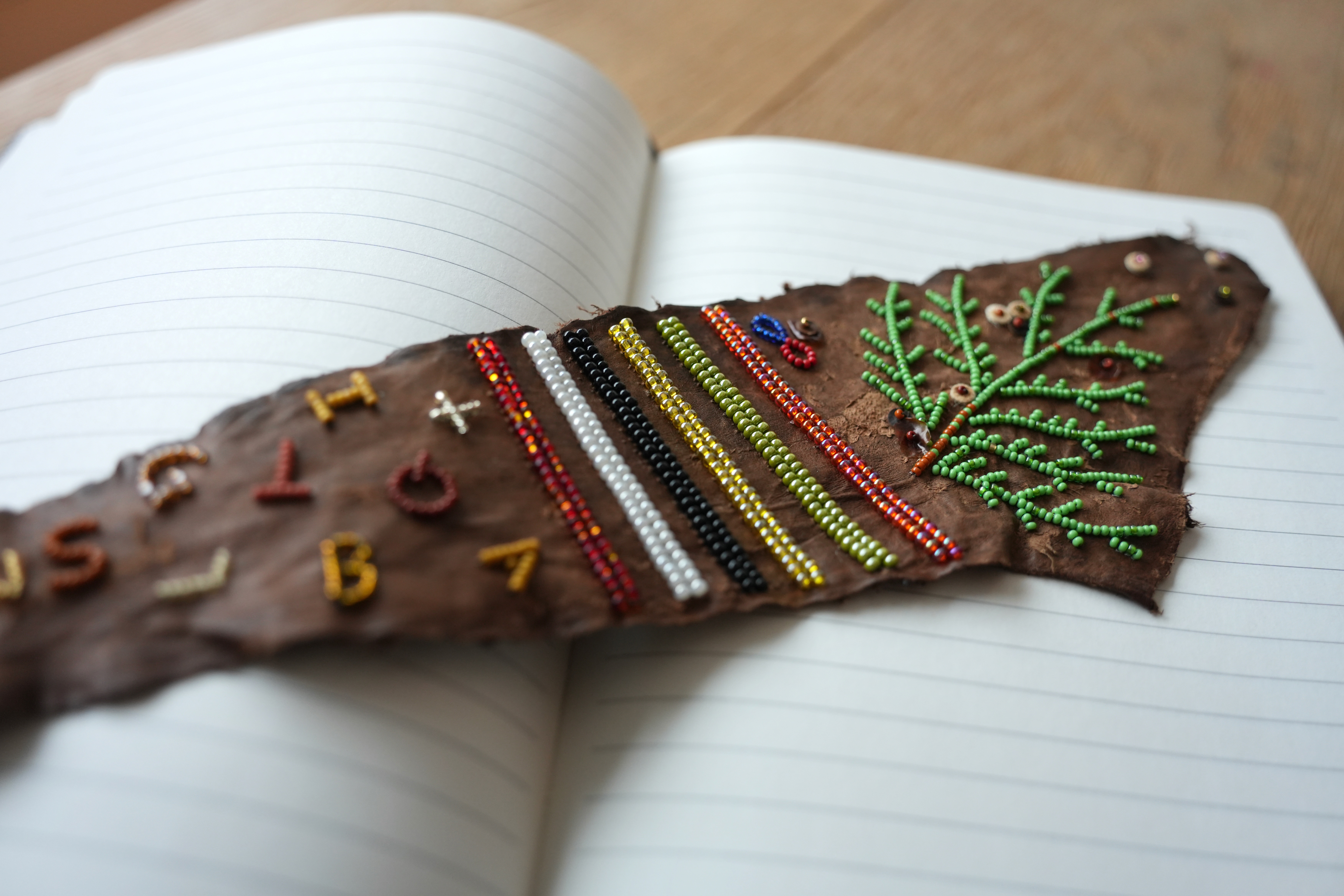Published 2025-07-14
Keywords
- ContemporaryMetisArt,
- Beadwork,
- Notes from the Field,
- Autoethnography,
- Memory Mapping
- Visual Code ...More
How to Cite
Copyright (c) 2025 Marissa Magneson

This work is licensed under a Creative Commons Attribution-NonCommercial-NoDerivatives 4.0 International License.
Abstract
In “Imaginary Spaces of Conciliation and Reconciliation,” Métis scholar and artist David Garneau reflects on two paintings that document gatherings through comic-style images with speech bubbles, but no text. These works, as Garneau explains, serve as mnemonic devices that capture the relationships, exchanges, and emotions in the room without revealing the content, relying on a coded visual language that requires deeper understanding (Garneau, 2012). This act of omission can also be seen as a form of refusal, acknowledging that some things are not meant to be shared (Simpson, 2007).Inspired by Garneau’s approach, I translated my reflections from the 2024 Mawachihitotaak conference into autoethnographic field notes through beadwork on home-tanned fish skin leather. Each design, color, and symbol carries personal meaning, allowing me to decide what to reveal and what to conceal. While those present at the conference may interpret the beadwork with deeper insight, outsiders have a more limited understanding. Drawing from Michelle Porter’s exploration of memory mapping and oral storytelling (Porter, 2024), I pair beadwork photographs with select conference quotes, offering potential context without translating the full narrative. This work enacts refusal by not sharing every embedded story, as they are not mine to fully tell.

